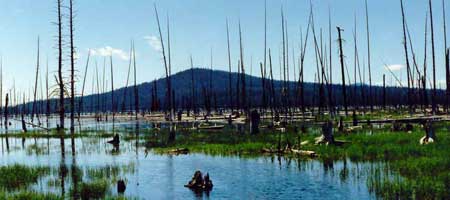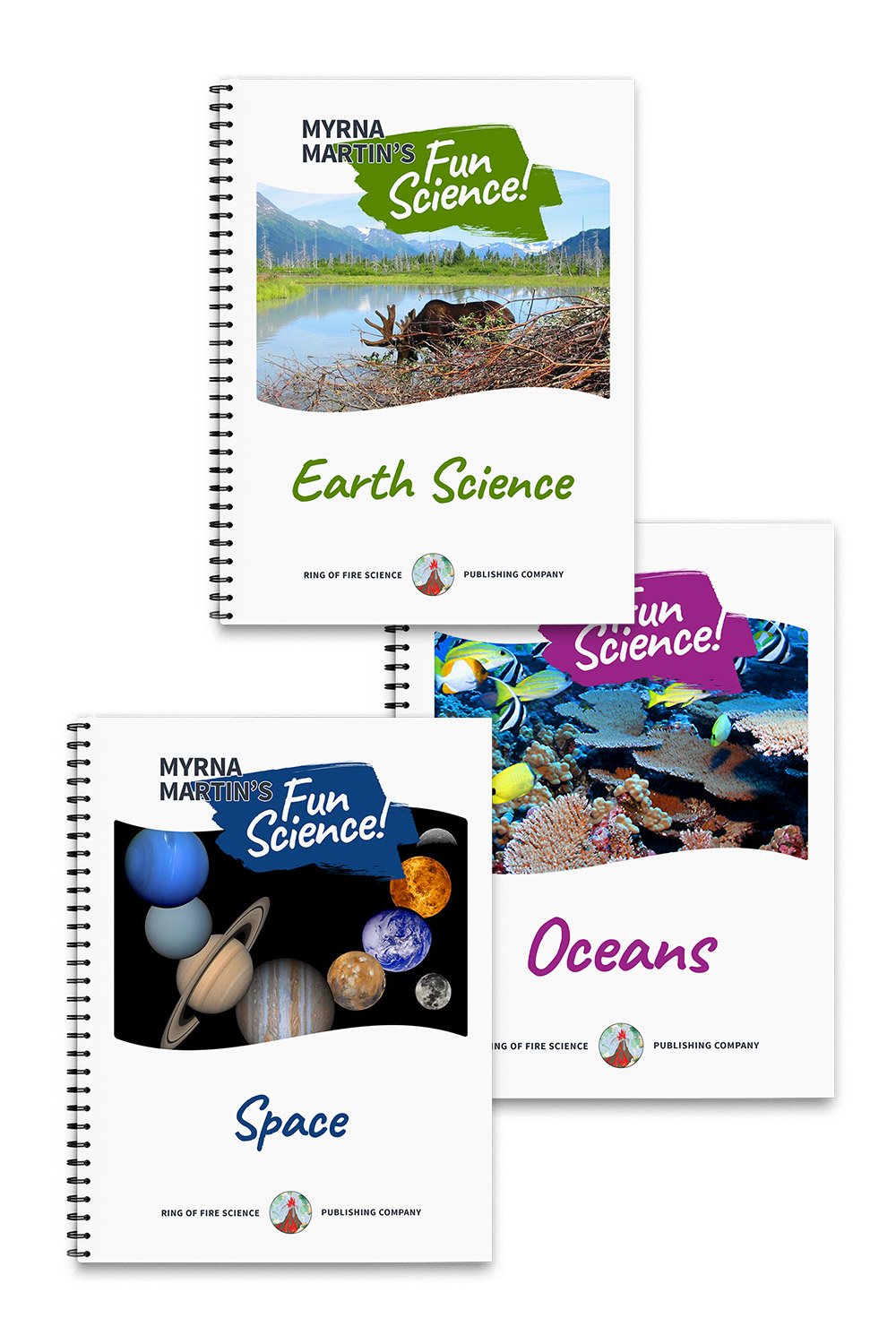Shield Volcanoes
Shield volcanoes – world wide
Shield volcanoes form primarily in the oceans although they can form anywhere on Earth. Scientists estimate there are over one million seamounts on the ocean floors. A new shield volcano forms when a crack on the surface of the Earth begins erupting thin layers of basalt lava. Over a long period of time the thin layers of lava erupted from the volcano’s vent creates a shield shaped volcano. Shield volcanoes have gently sloping sides. The dome at the top often contains a caldera that forms after an eruption and the magma chamber below the volcano is partly emptied.
Scientists estimate there are about 4,000 submarine volcanoes for every million square miles of ocean floor in the Pacific Ocean. Therefore if you add all the square miles of ocean floor on our planet there may be close to a million submarine volcanoes. Only a small percentage of these volcanoes have been mapped and/or studied.
Newberry Caldera
Oregon and Washington have a number of shield volcanoes that have formed on the continent. Newberry Volcano is a large shield volcano that is unusual because it has erupted not only basalt lava but andesite and rhyolite lavas. The volcano erupted numerous times in the past and has a large collection of cinder cones, volcanic domes, lava flows and fissures on its flanks.
Newberry caldera is located at Newberry Volcano’s summit. It is an oval shaped caldera 4 by 5 miles (6.4 by 8.0 km) wide. Inside the caldera are Paulina Lake and East Lake separated by a lava flow. The Big Obsidian Flow covers 800 acres at near its summit and has a trail through the obsidian flow for visitors. Lava Cast Forest, Lava River Cave and Lava Butte were all formed due to volcanic action by the volcano. Lava River Cave is the longest lava cave in the state of Oregon. The U.S. Forest Service oversees all of the Newberry Volcanic National Monument areas.
Tamu Massif
The largest shield volcanoes on Earth are located in the Pacific Ocean basin. Tamu Massif is a recently discovered volcano in the Pacific Ocean basin that is even larger than Mauna Loa. Scientists from the University of Houston thought at first the volcano was three separate volcanoes. Their latest research indicates it is a single volcano that is 14,620 feet (4,460 m) tall. The volcano has a round dome and covers 280 x 400 miles (450 km x 650 km). Its base cover over a 120,000 square miles. The volcano is unusual because of its slope. The flanks of the volcano are very gradual making the volcano not very high in comparison to its broad base.
Other researchers will have to confirm that Tamu Massif is a single volcano and not three volcanoes as the scientists at first thought. If the information prove to be true the volcano will rival Olympus Mons, the largest known volcano in our solar system on Mars. Mauna Loa has been considered the largest volcano on our planet before the recent September 2013 published papers by the research team. Mauna Loa is much smaller and only about 2000 square miles but it is much taller. Tamu Massif is a submarine volcano while Mauna Loa is so tall stands 13,680 feet (4,170 m) above the surface of the ocean.
Pahoehoe lava and Aa lava
Pahoehoe lava
Basalt lava that forms shield volcanoes contains iron-rich minerals that contain between 45% and 54% quartz and are rich in ferromagnesian minerals (iron and magnesium). Lava flowing out of vents Kilauea are about 2000 degrees Fahrenheit. At this temperature the lava forms pahoehoe flows that move down the volcano in rivers. The lava on the outside of the flowing river begins to cool forming levees that eventually can form a roof over the floating lava creating a lava tube.
Lava tubes and Lava Caves
Lava tubes carry the hot molten rock down the volcano’s slopes to the ocean where it flows in and creates pillow basalt. When the eruption stops the lava empties into the ocean leaving behind a lava cave. Thurston Cave is a tourist attraction on the Island of Hawaii that visitors can walk through. The walls are lined with pahoehoe lava. Pahoehoe lava that flows over the flanks of the volcano forms a ropy surface that can easily be walked on.
Aa lava
Aa lava is cooler than pahoehoe lava. The lava flows can sometimes be very thick and slow moving. A person can walk in front of these aa lava flows because they move so slowly. A pahoehoe lava flow can turn into an aa lava flow as it cools. Both types of lava are basalt. Aa lava flows can be up to 60 feet high.
Black and green sand beaches
Black sand beaches form when the basalt lava flows into the ocean and cools before it can crystallize. Green sand beaches form when the molten rock has crystals of olivine that crystallized prior to the sudden cooling of the basalt when it reaches the ocean. The crystals of olivine collect on the seashore as green sand and the shards of glassy basalt create the black sand.
More Volcano Links
|
Volcanoes for Kids |
Pompeii Eruption |
KIDS FUN SCIENCE BOOKSTORE
 |
 |
Check out Myrna Martin's award winning textbooks, e-books, videos and rock sets. The Kids Fun Science Bookstore covers a wide range of earth science topics. Click here to browse.
Sign up to our monthly newsletter and receive our FREE eBook containing 3 fun activities that don’t appear in any of our other books!
The Kids Fun Science monthly newsletter will include the following: current events, weird and fantastic facts, a question of the month, science trivia and the latest new content from our website.
We respect your privacy and you can be assured that we will never share your email address or use it for any other purpose than to send you our newsletter.







